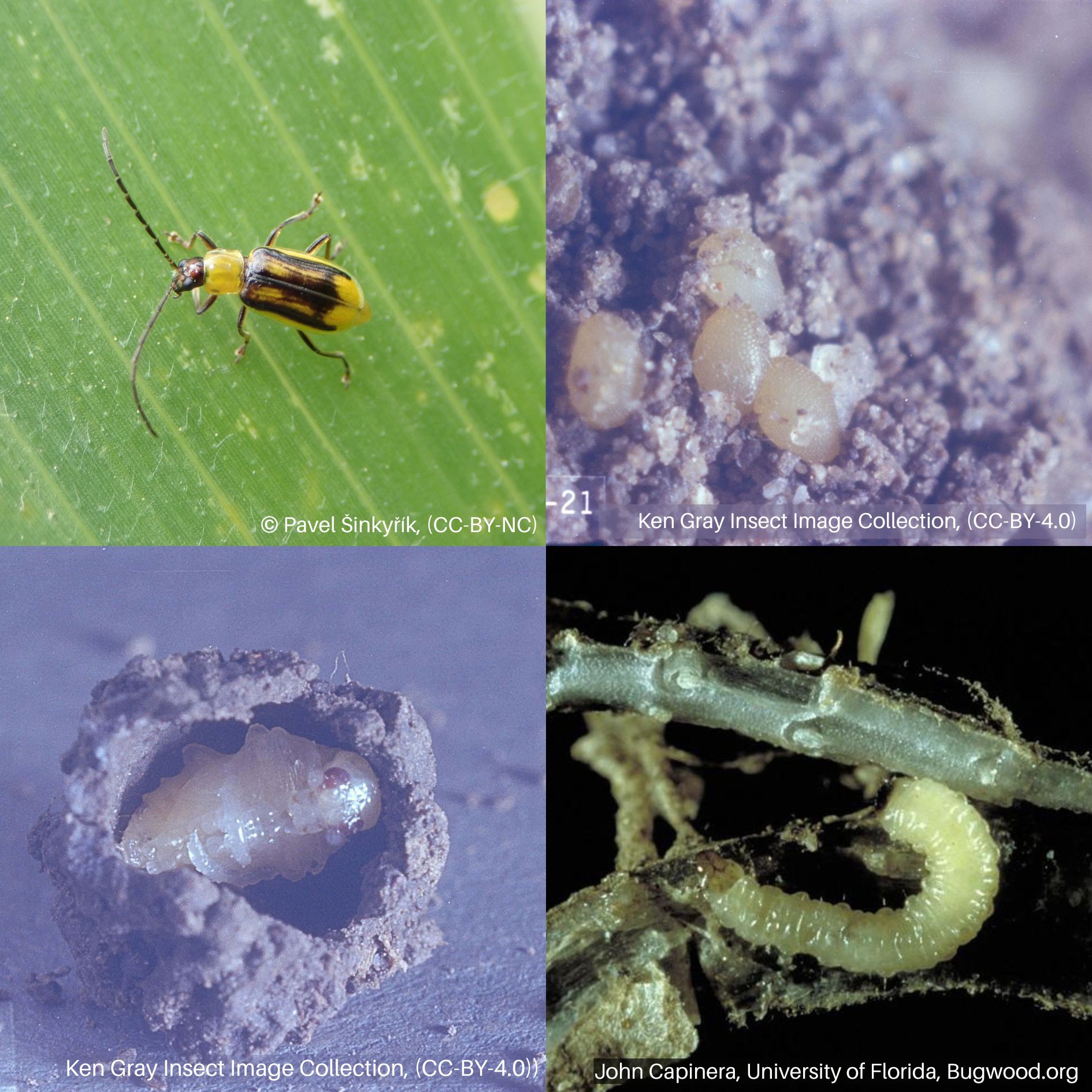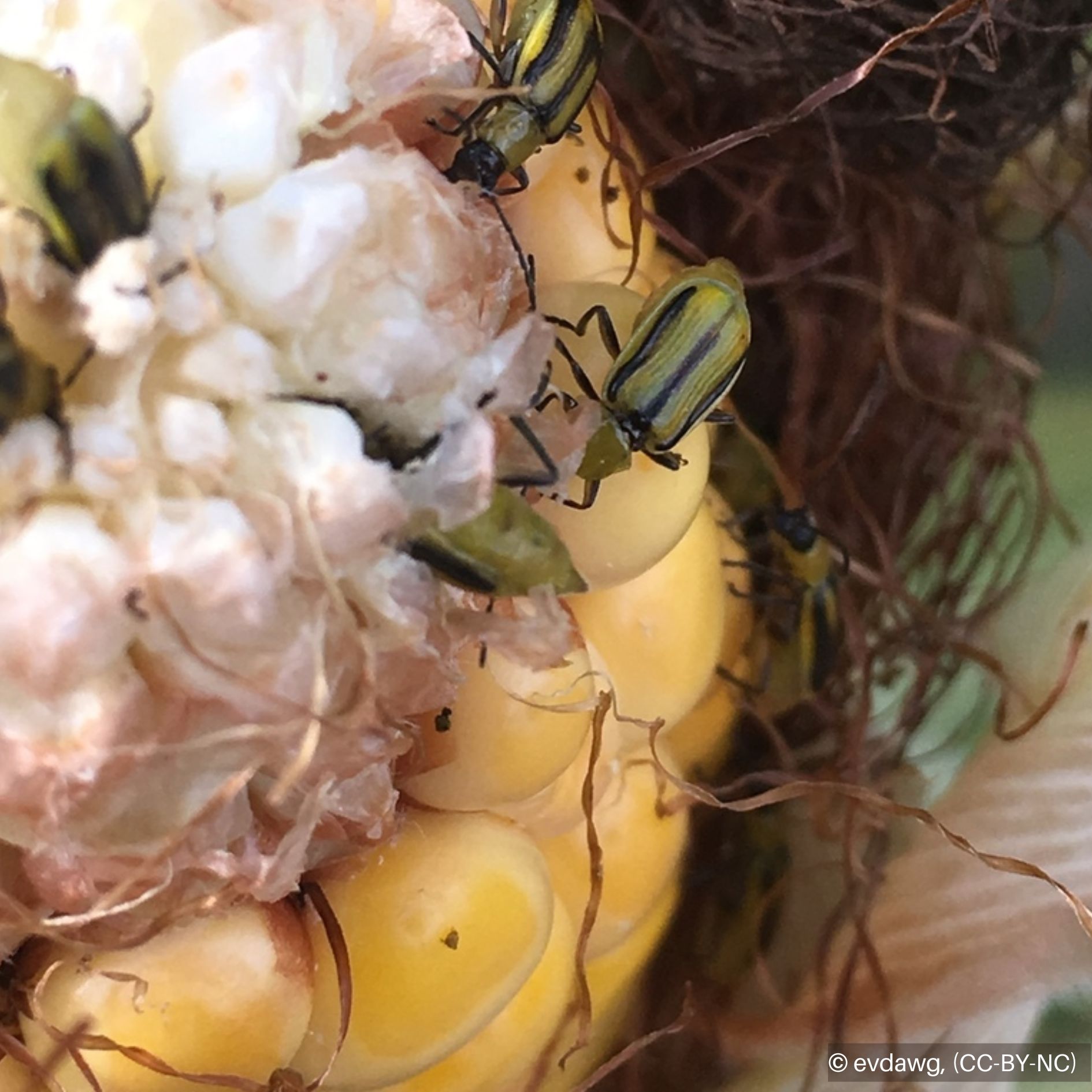Western Corn Rootworm
 Western Corn Rootworm Life Stages
Western Corn Rootworm Life Stages Western Corn Rootworm and Feeding Damage on Corn
Western Corn Rootworm and Feeding Damage on Corn Feeding Damage on Corn Silk
Feeding Damage on Corn Silk Corn Root Damage from Larval Feeding
Corn Root Damage from Larval FeedingHOSTS
- Corn
DESCRIPTION
Adults are small beetles with yellow-green bodies and three black stripes on the forewings. Larvae are creamy white with a brown head capsule.
BIOLOGY
Egg | Larva | Pupa | Adult
Western corn rootworms are active early June to mid-July. There is one generation per year. They overwinter as eggs in the soil. Monitor adults with yellow sticky traps; check and replace traps weekly.
SYMPTOMS
Larvae feed with chewing mouthparts on roots causing browning, lesions, tunneling, curved cornstalks (goosenecking), yield losses, and susceptibility to root and stalk diseases. Adults feed with chewing mouthparts, resulting in poorly-filled ears.
GENERAL MANAGEMENT
Larval feeding is the most damaging, while adult feeding will not typically result in economic loss.
- Rotate corn crops
- Plant early
- Select varieties with vigorous root systems that are well adapted to the area
INSECTICIDES
Consider treatment if adults exceed 35 per trap per week in continuous corn (fields where corn is planted for two or more consecutive years).

